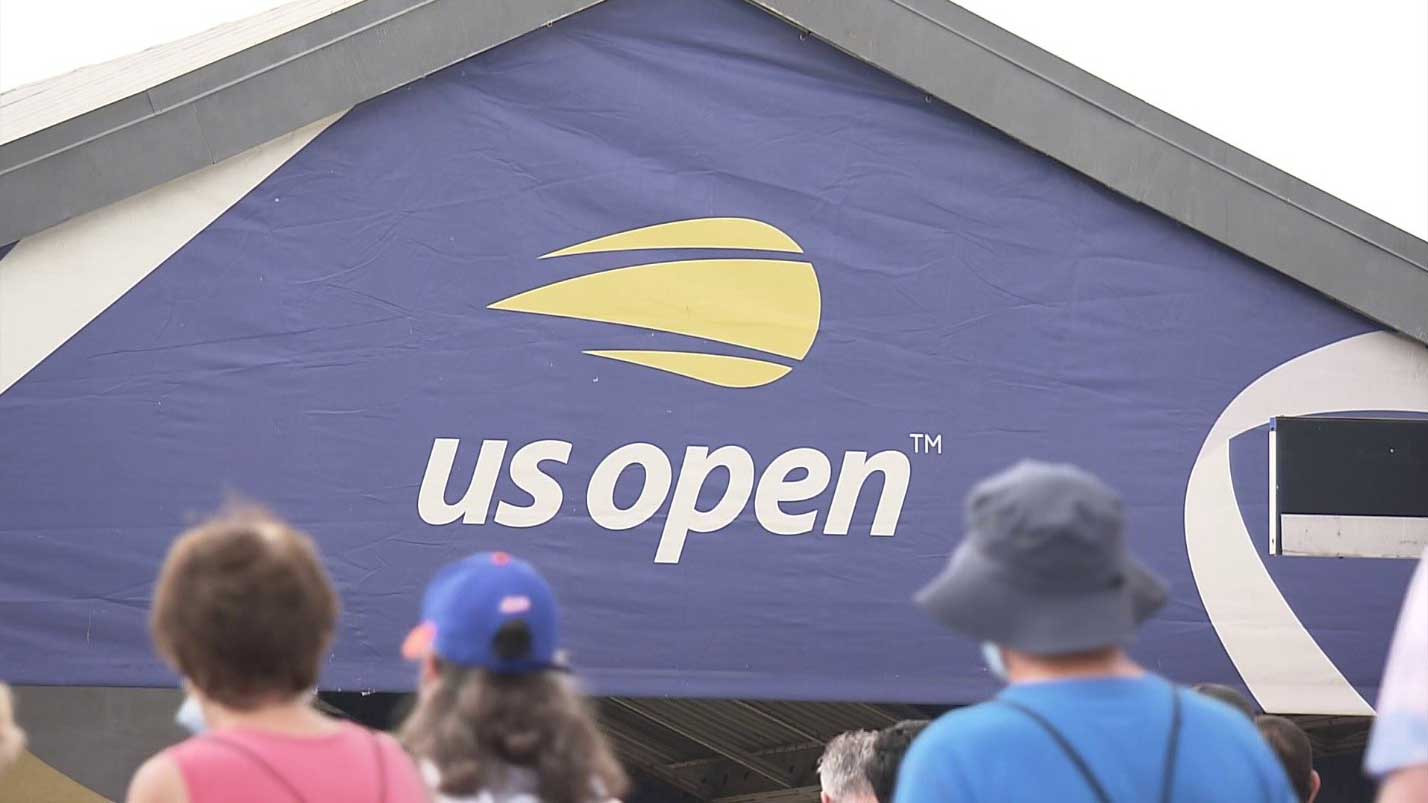Temperatures reached nearly 32 degrees Celsius on a blazing hot and humid day in Flushing, New York. As tennis players from all over the world practiced and got into their pregame routines, a crowd began to form in front of the gates at the Billie Jean King National Tennis Center. There was a familiarity to the air that had not been felt since almost two years ago, when the United States Tennis Association (USTA) closed off the venue to fans amid the COVID-19 pandemic.
BEFORE THE FIRST SERVE
People were undoubtedly excited to finally experience their first in-person US Open action since 2019, but there was a caveat. With the recent FDA approval of the Pfizer-BioNTech vaccine, the USTA announced that not only will there be full capacity throughout the event, but also that spectators over the age of 12 must show proof of vaccination.
The announcement came just three days before the start of the tournament. Initially, the USTA had put in place lax restrictions on vaccinations and masks. But the approval of the Pfizer vaccine, coupled with a spike of cases in New York involving the Delta variant, caused the organization to change course and add much stricter rules.
Among the familiar signage by the main gates telling fans what they can and can’t bring into the stadium, there were also new placards reinforcing the vaccination rule. These announced that the US Open was following in the footsteps of New York City, which has instituted a vaccine mandate. There were also signs informing fans that all in-stadium transactions would be cashless as a way to minimize the spread of the disease through contact.
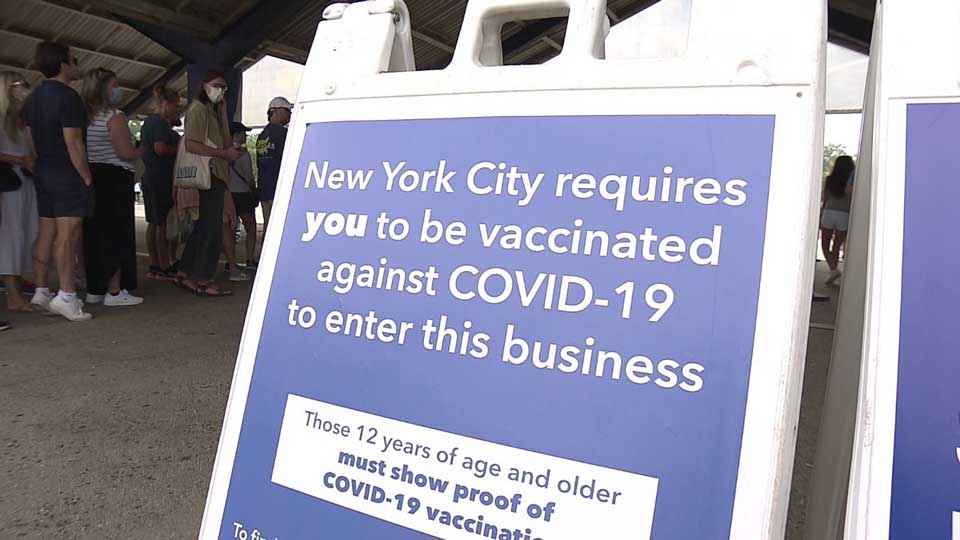
ADVANTAGE: VACCINE
Despite the sudden change in requirements, fans arrived by the tens of thousands, and all were ready with their vaccine cards in hand. USTA staff directed the crowd to have either their paper or digital proof of vaccination ready, which they checked before the security gates to the stadium. Even though many big stars dropped out of the tournament due to injury — Roger Federer, Rafael Nadal, and the Williams sisters among them — fans were simply happy to sit and watch players hit and grunt their way through matches without needing a television screen.
Wearing a Rafael Nadal hat, Chris from Massachusetts explained how excited he was and how much he had waited for this moment.
“I usually go every year,” he said. “I wasn’t able to go last year, so going this year… it’s a real treat.”
That sentiment was echoed by everyone I spoke to on the first morning of the tournament. People came from all over the country, including Pennsylvania, Maryland, and South Carolina.
“It feels like life has begun again,” said another man, named Mickey, as he waited in line.
Many fans told me that they had attended the US Open for years — in some cases, decades — and were devastated when they weren’t able to make the trip last year. For them, getting the vaccine was a no-brainer.
“Everyone is being safe,” a man from Pennsylvania said. “I think it’s one of the better sports you can participate in during this time.”
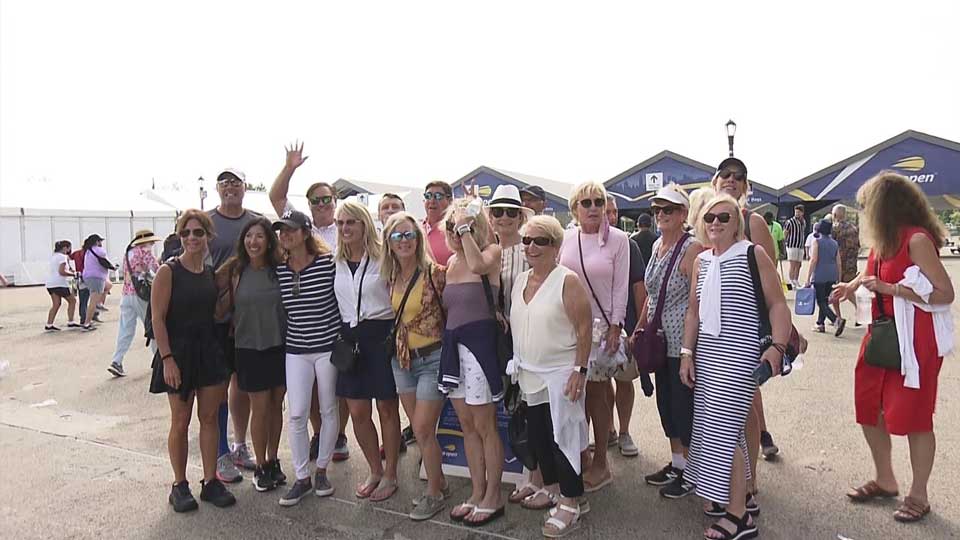
WAITING FOR YEARS TO WAIT FOR HOURS
On day one, nearly 31,000 spectators came to watch the early session. The gates opened at 9:45 AM, but by the time the first match began at noon, thousands of people were still stuck in line waiting to get into the stadium. The lines for the main gate stretched from the entrance all the way back to the 7-line train platform across the street, and zigzagging along the way. At one point, police and security had to direct people to stand on the Citi Field side of Mets-Willets Point station.
The south gate waiters did not have it any better, as lines stretched from the back entrance all the way to the iconic World’s Fair globe in front of Queens Museum. The first match between two Americans, Sloane Stephens and Madison Keys, began at 12:01, but the majority of fans were still stuck outside, with some waiting close to two hours just to show their vaccine cards.
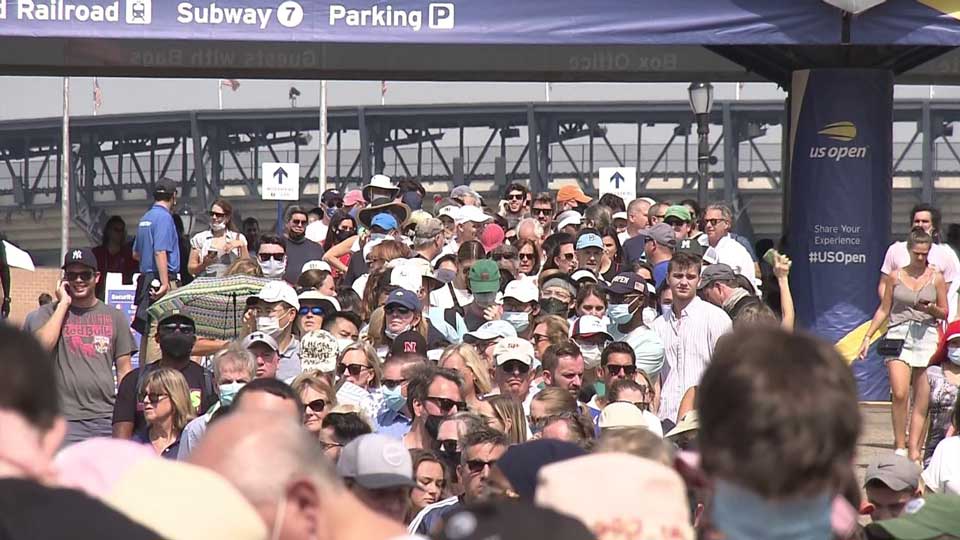
The USTA acknowledged the issue but did not attribute the wait to vaccine checks. In a statement, the organizers blamed the long lines on late arrivals. In previous years, an average of 10,000 people came to the venue before 11:00 AM; on Monday, that figure was just 3,000.
The USTA also said that more people brought bags with them this year. Since staffers had to thoroughly check every bag, this added to the delays.
The lines cleared and began to move much smoother by 2:00 PM, but the long wait put a damper on an otherwise flawless day.
LOOKING AHEAD
Close to 54,000 fans attended the first day of the tournament despite the sudden vaccine mandate. It was, without question, a successful start. As vaccines become increasingly required across the country, it is likely that other sports leagues will look to the US Open as a guide.
The tournament was the first major sporting event on US soil that required fans to prove they are vaccinated, but other teams in other leagues have announced a similar mandate.
The Las Vegas Raiders of the National Football League (NFL), while announcing that fans will need proof of vaccination, have also explicitly said that there will be no facemask requirement or even recommendation. The Brooklyn Nets of the National Basketball Association (NBA) require proof of vaccination but recommend that fans wear facemasks.
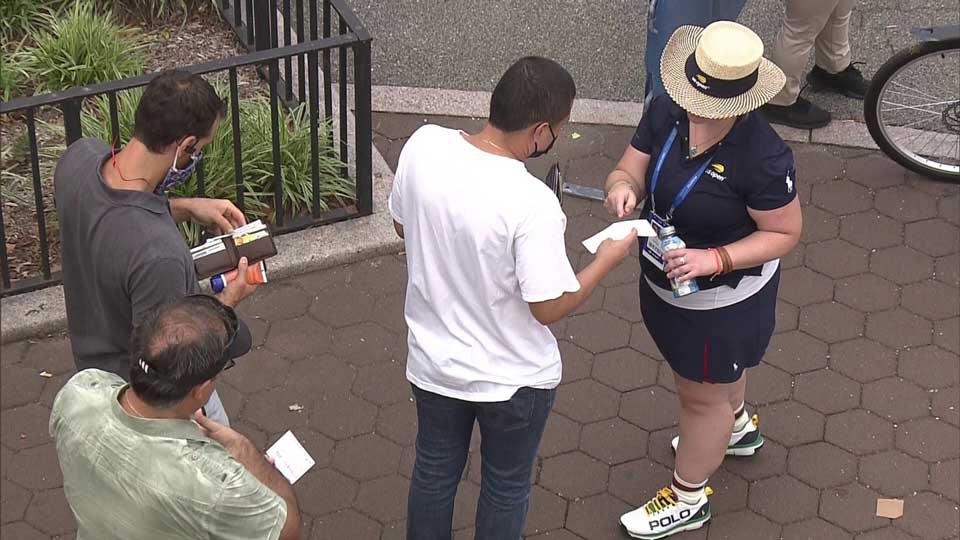
Less clear is what will happen on the player side of the issue. The USTA, as well as New York City in general, did not require athletes to get the vaccine. Athletes at the Open were tested every four days, and if any came back positive, they would have been kicked out of the tournament and required to quarantine for 10 days.
The NFL, which started its regular season on September 10, is trying to enforce a vaccine mandate for its players. The NBA has announced a rule that players in markets with mandates must receive their shots or be barred from arenas and other facilities. So far, these teams include the New York Knicks, Brooklyn Nets, and Golden State Warriors. One can expect that teams in the National Hockey League will be having the same sorts of conversations as they approach opening night.
Whatever the requirements may be, fans are keeping a close eye on what they need to do to watch their favorite sports event live.
“I’m very excited to even be back up here and to see some of the players,” said April Gift, a manager with the USTA in South Carolina.
Fans just want to watch games, and for the first time in almost two years at the US Open, a loud cheer could be heard roaring from outside the stadium, as Sloane Stephens finished off Madison Keys in the third set.
